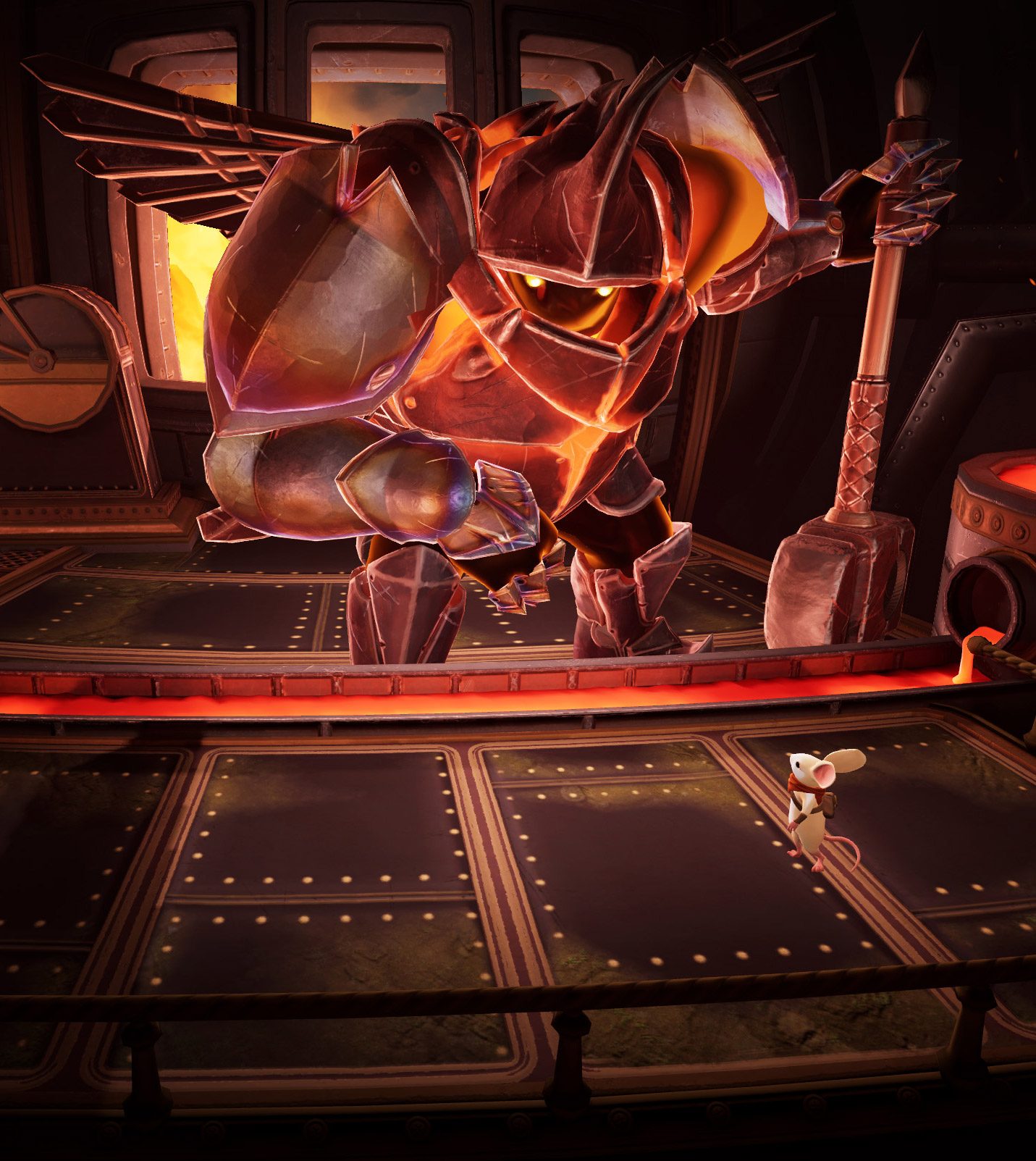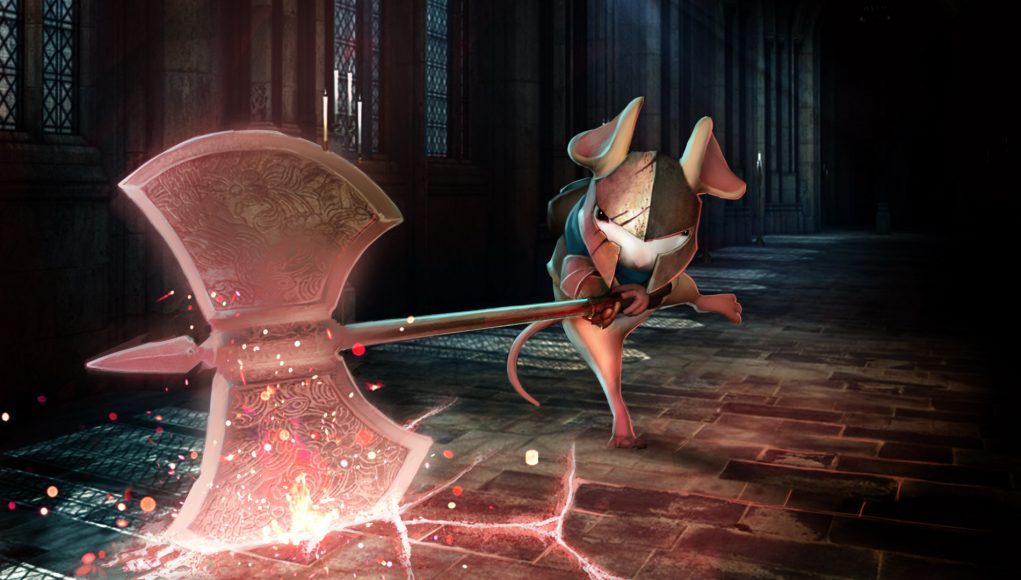Forging a Fight

If you have played the game, then my ‘hammer’ pun a moment ago will certainly have clued you in to what I’m talking about: the boss fight with The Warden, a mace-wielding blacksmith-sorcerer found in deep in the depths of the world.
The Warden is physically the biggest foe Quill fights (about a quarter of the height of a human), and without the player’s help, the battle would be insurmountable. Both the player and Quill work together throughout the encounter in a way that impressed me with how well the game guided the player in figuring out what to do without blatantly showing them.
The climax of the fight is dodging The Warden’s big hammer swings with Quill, and then at the right moment grabbing the hammer as the player to make it vulnerable to Quill’s attacks.

Stiksma explained the layers of design that went into pulling it off.
“Approaching the design [of the fight], we had to understand what our tools were to implement the gameplay: what abilities would you and Quill have? This leads to a lot of iteration as you don’t always know what these will be up front (we went through many prototypes to get to one we were happy pushing further),” Stiksma said. “Eventually we settled on the goal for Quill to use her hammer in some way, while also needing the player to reach in and grab the Warden in some capacity. Both required physical VR interaction, so we were happy to iterate in this direction.”
It wasn’t enough just to know how Quill and the player would interact with the boss, the team also had to consider the physical space of the fight in order to ensure the action would happen close enough to the player for them to reach into the fight.
“For the play space, we have metrics on comfort from a size perspective. We also know where players are the most comfortable when performing their interactions. For this fight, we leaned 100% on comfort to ensure we had room to flex in other areas. Simple was better here, as it allowed us more time to iterate on the hammer and figure out things like what screen shake means in VR or how to best communicate the damage loop without any UI,” explained Stiksma. “Focusing in on the interactions, we tried many options: grabbing his hand, grabbing him, grabbing other things in the environment. These all took time to try and evaluate, and all had some setbacks. I’m really happy with where we settled and am proud of this fight and the work to get it online.”
And the fight wasn’t memorable just for its design… it also featured some of the best character animation I’ve seen anywhere in VR to date. I recall as I was battling through the fight the first time, half of my attention was on actually staying alive and getting through the challenge, but the other half was busy gawking at the weighty animations of The Warden that were drenched with personality.
I shouldn’t then be surprised to learn the game’s Animation Director, Rick Lico, spent some three years at Monolith Productions and another eight at Bungie in senior and lead animation roles. Even so, Stiksma told me the studio draws inspiration and style less from VR-specific or game-specific works, and more from CG animation studios.
“For our gameplay and story animations in Moss, we draw more from traditional animation studios like Pixar or Dreamworks. The massive talent they have for animation is obvious, and we can learn so much by thinking about how their work translates to virtual characters in a virtual world—who know you exist and can look you in the eye.”
Character animation tends not to be particularly emphasized in VR game design—perhaps because the character in most first-person VR games is ‘animated’ entirely by the player! Not to mention that making interactive characters really work in VR is a huge challenge.
But Book II’s Warden fight really drove home to me how much great character animation can add to the immersion and entertainment of a VR experience—especially when the player gets to interact with the subject of that animation.

